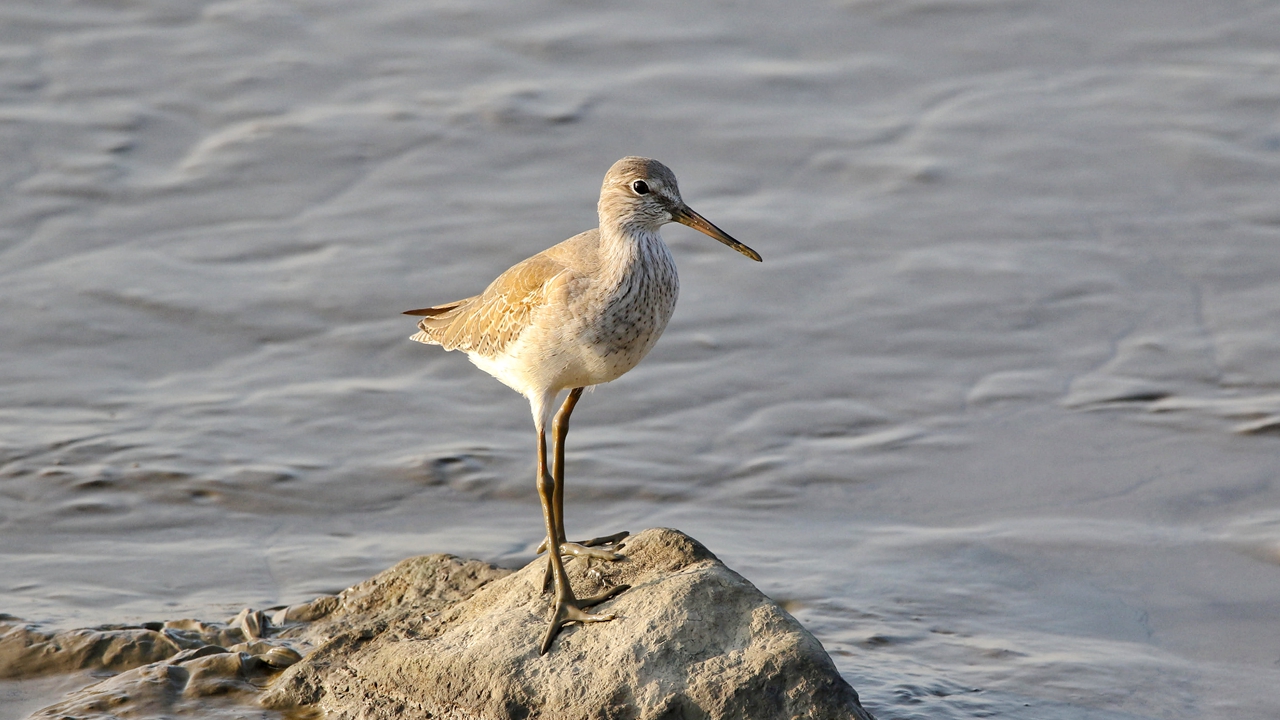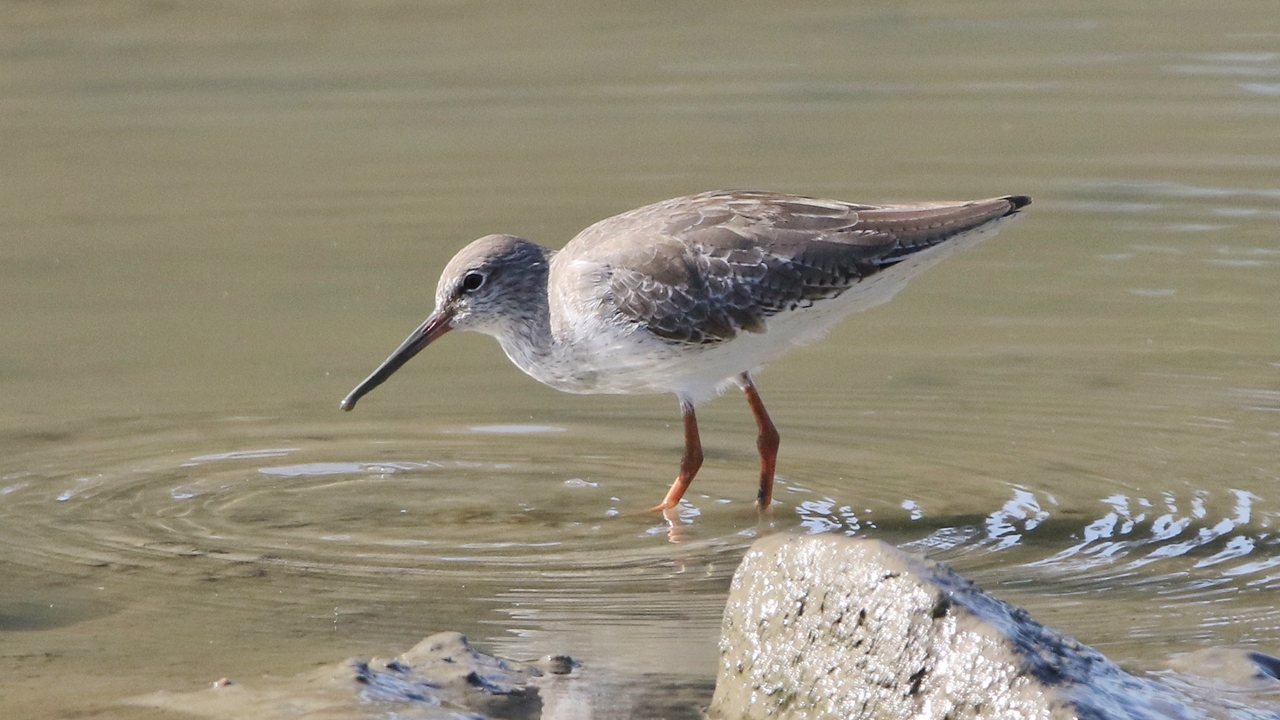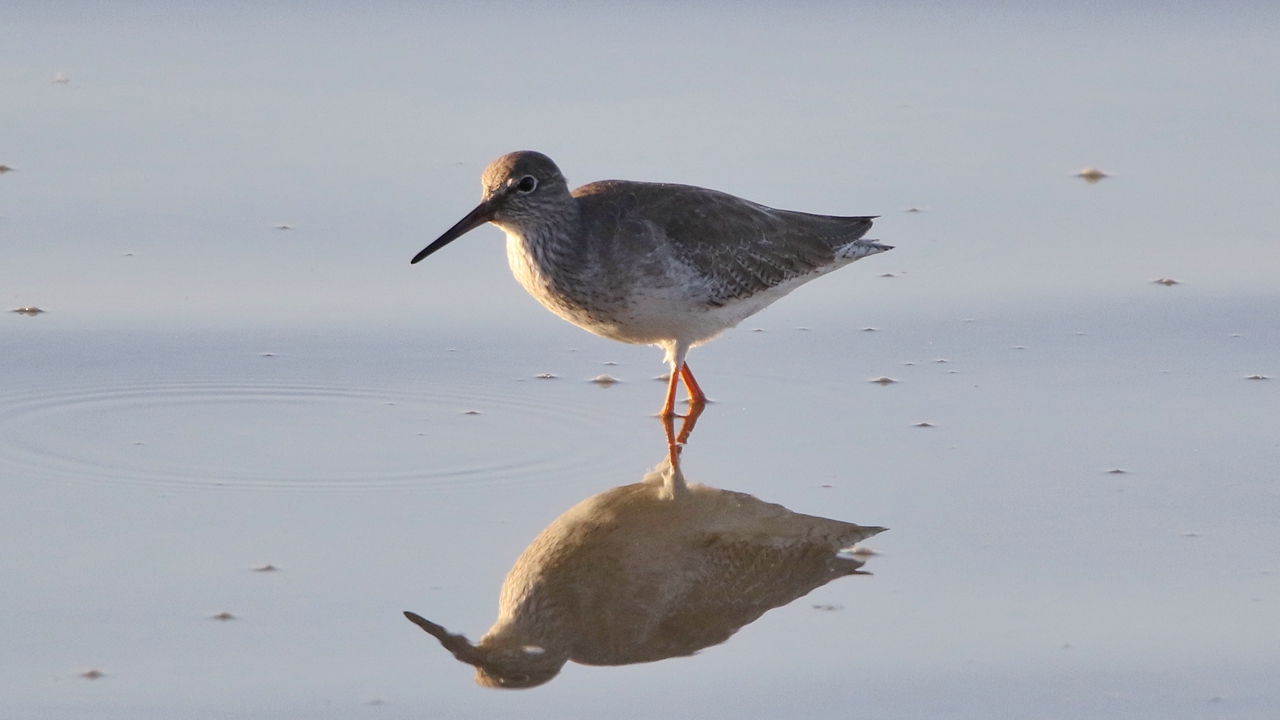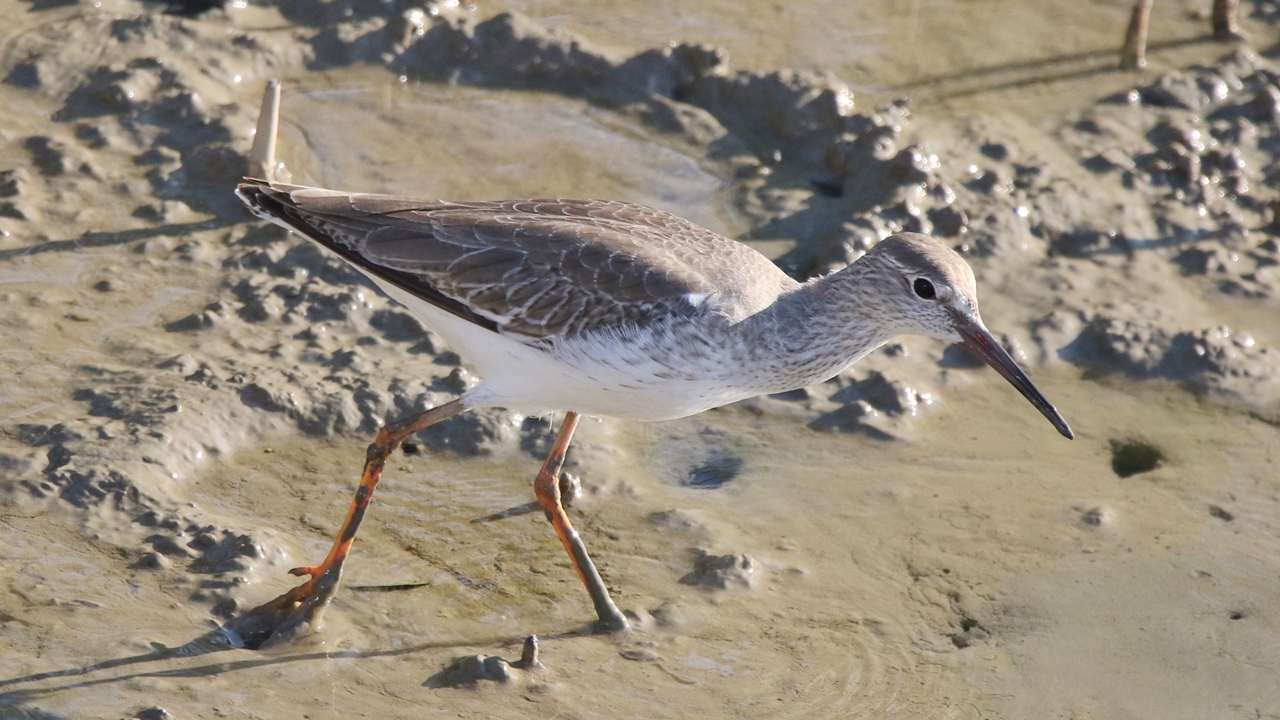The common redshank
Writer: Isaac Cohen | Editor: Liu Minxia | From: Shenzhen Daily

A common redshank is seen in Shenzhen Bay Park, Nanshan District. Photos by Isaac Cohen
The common redshank
Another fantastic representative of the Tringa family and a yearly visitor to Shenzhen, the common redshank (Tringa totanus) loves returning to previously visited sites, showing a remarkable site fidelity that, for our city, is a great asset.
在冬天来深的鸻鹬群中,红脚鹬是较具代表性的一员。它们对去过的越冬地有着很高的忠诚度,堪称深圳这座城市的生态宝藏。
Mainly inhabiting the northern areas of Europe and Asia as well as southern European regions, this fantastic bird travels south for survival. During the cold winter months, they stay insub-Saharan African countries and in the south of Asia, including Shenzhen.
红脚鹬繁殖地主要在北欧、南欧及北亚等地区,每年秋季开始南迁,在撒哈拉沙漠以南非洲诸国及亚洲南部越冬,深圳是它们迁徙的目的地之一。

A common redshank forages in Shenzhen Bay Park, Nanshan District.
The common redshank is a relatively small animal, growing around 28 centimeters long with a wingspan of about 65 centimeters. It has a light brown plumage on the upper parts and chest, adorned with dark brown streaks. The lower belly is lighter brown to white, also with brown markings. The legs and beak are bright orange, and a white eye-ring makes them look gorgeous.
这种涉禽体型较小,体长约28厘米,翼展约65厘米,上半身及胸部覆羽浅棕色具深色纵纹,下半身覆羽则由浅棕色逐渐转淡至纯白色,亦具棕色纵纹,喙部及腿部亮橙红色,具雅致的白色眼圈。
These birds are usually linked to wetlands and coastal zones, especially in our city, but they can inhabit grasslands too. In our city, they wander around the mudflats of the coast, searching for mollusks, crustaceans and small fish.
红脚鹬常见于深圳的湿地及海岸地区,有时也在草地活动,喜欢在退潮的滩涂上徘徊,寻找软体、甲壳及小型鱼类等动物性食物。

A common redshank is seen in Shenzhen Bay Park, Nanshan District.
Their breeding season runs from April to June. Nests are built by the female alone, and she will breed only once a year, laying up to five eggs per clutch. Both parents will help incubate the eggs for about four weeks.
红脚鹬每年繁殖一次,繁殖期在4至6月份。鸟巢由雌性独自搭建,每窝最多可产5枚卵,由雌雄亲鸟轮流孵化4周后,雏鸟方可破壳。

A common redshank is seen in Shenzhen Bay Park, Nanshan District.
This beautiful species is not globally threatened, but if we want to keep enjoying them, we must protect our coastal areas to provide them with a healthy ecosystem for future visits.
红脚鹬虽属无危物种,但我们仍然要保护好这座城市的海岸,为这些远道而来的客人提供理想的越冬栖息地。